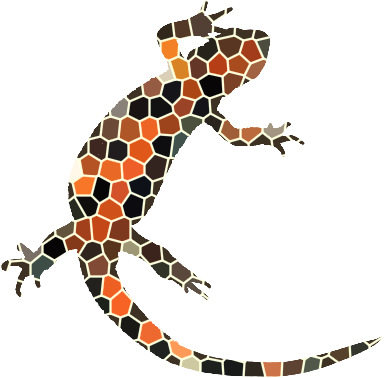Spring 2022: Classes meet T H 12:05 - 1:20pm in Kochel
77. Attend class wearing a face mask that covers your mouth and nose. (Until
further notice, face masks are required inside all university buildings, regardless of
vaccination status.) Remember: Your mask protects me, my mask protects you.
Read the Course Description
This contains a detailed explanation of course policies and the basis for grades.
Jump Down to the Schedule
This link jumps to the closest day to today's date. Review the schedule as we get started to get a sense of how this course will work on a daily basis.
Quick links to digital resources
- Canvas: http://canvas.psu.edu To submit homework assignments and exams and read private course announcements
- introDH-Hub: https://github.com/newtfire/introDH-Hub Class GitHub Repository and Issues Board
- oXygen XML Editor: for coding of all kinds, used in multiple DIGIT courses for text archiving, analysis, and web projects
- Wordpress (via PSU): Penn State resource for creating a website
- TimeMapper: Web-based tool for plotting and visualizing events in time and space based on spreadsheet data.
- Google Sheets: Web-based spreadsheet software designed for interactive sharing.
- Voyant Tools and Antconc Free
concordance and indexing tools supporting
distant reading
analysis of texts. - Kumu.io: Concept mapping and network tool
- itch.io: Source of indie games, a selection of which will be made available for critique.
- Course Home Website: https://newtfire.org/courses/introDH/ Home of our syllabus and schedule.
| Week 1 | Class topics | Do before class |
|---|---|---|
T 1-11 |
|
... |
H 1-13 |
|
|
| Week 2 | Class topics | Do before class |
|---|---|---|
T 1-18 |
Discussion / hands-on exercise on Dear Data. Longer-range challenge on personal data collection and visualization |
|
H 1-20 |
|
|
| Week 3 | Class topics | Do before class |
|---|---|---|
T 1-25 |
Discussion: data non-neutrality / data ethics / data justice / data visceralization. Introduce Matrix of Technological Domination exercise |
|
H 1-27 |
|
|
| Week 4 | Class topics | Do before class |
|---|---|---|
T 2-01 |
Launching Comparative Website Development assignment
series
|
|
H 2-03 |
|
|
| Week 5 | Class topics | Do before class |
|---|---|---|
T 2-08 |
|
|
H 2-10 |
|
Continue GitHub Website Development:
|
| Week 6 | Class topics | Do before class |
|---|---|---|
T 2-15 |
|
|
H 2-17 |
|
|
| Week 7 | Class topics | Do before class |
|---|---|---|
T 2-22 |
|
|
H 2-24 |
Orientation to PSU Wordpress and Penn State web hosting services. Wordpress themes for accessibility, and Pages vs. Posts |
|
| Week 8 | Class topics | Do before class |
|---|---|---|
T 3-01 |
Website development: Review of Comparative Website Development Assignment. Wordpress and GitHub Pages in-class work. | Develop HTML content and CSS styling. |
H 3-03 |
Website Development consultation. |
Develop web portfolio contents on both GitHub Pages and Wordpress |
M 3-07 — F 3-11 |
Spring Break | Enjoy this week! |
| Week 9 | Class topics | Do before class |
|---|---|---|
T 3-15 |
|
Comparative Web Development Assignment due: Complete content development on both sites. Revise content, formatting, styling with accessibility in mind. |
H 3-17 |
|
|
| Week 10 | Class topics | Do before class |
|---|---|---|
T 3-22 |
|
Antconc / Voyant assignment: mystery text assignment and discussion on introDH-Hub |
H 3-24 |
|
|
| Week 11 | Class topics | Do before class |
|---|---|---|
T 3-29 |
Testing/drafting exercise for Corpus Analysis assignment: Comparing ngrams in context | Analysis/screen captures for Corpus Analysis assignment |
H 3-31 |
Workshop/Discuss corpus analysis drafts | Prepare a rough draft of your Corpus Analysis post on your website to workshop and review. |
| Week 12 | Class topics | Do before class |
|---|---|---|
T 4-05 |
|
Complete the Corpus Analysis assignment on your website. |
H 4-07 |
|
Tolkien Hypothes.is Annotations
Exercise: Read and annotate (w/ Hypothes.is in our
2021FA-IntroDH group) J. R. R. Tolkien, Leaf by Niggle |
| Week 13 | Class topics | Do before class |
|---|---|---|
T 4-12 |
Organizing and visualizing networks on Leaf by Niggle: Working with Kumu.io: styling nodesand edges, touring network stats. |
Construct a network in Google Sheets and import to Kumu.io. Begin styling and organizing in Kumu.io |
H 4-14 |
|
Complete a Kumu network on Leaf by Niggle, submit links to Google Sheet and Kumu network on Canvas. |
| Week 14 | Class topics | Do before class |
|---|---|---|
T 4-19 |
|
Game Analysis
Assignment:
|
H 4-21 |
Discussion of Game Analysis drafts. Introduce Creative Commons: Remediation, Remixing Copyright, Creative Commons | Prepare a first draft of your Game Analysis on your website. |
| Week 15 | Class topics | Do before class |
|---|---|---|
T 4-26 |
Class Exercise: Readings and Discussion: Remixing,
Copyright, and Creative Commons.
.
|
Work on Kumu.io network for Game Analysis Assignment |
H 4-28 |
Last Day! Workshop Game Analysis Review drafts / networks |
|
| Finals Week: May 2 - 6 | To Complete |
|---|---|
T 5-03 |
Complete Game Analysis Review due by 11:59pm |

